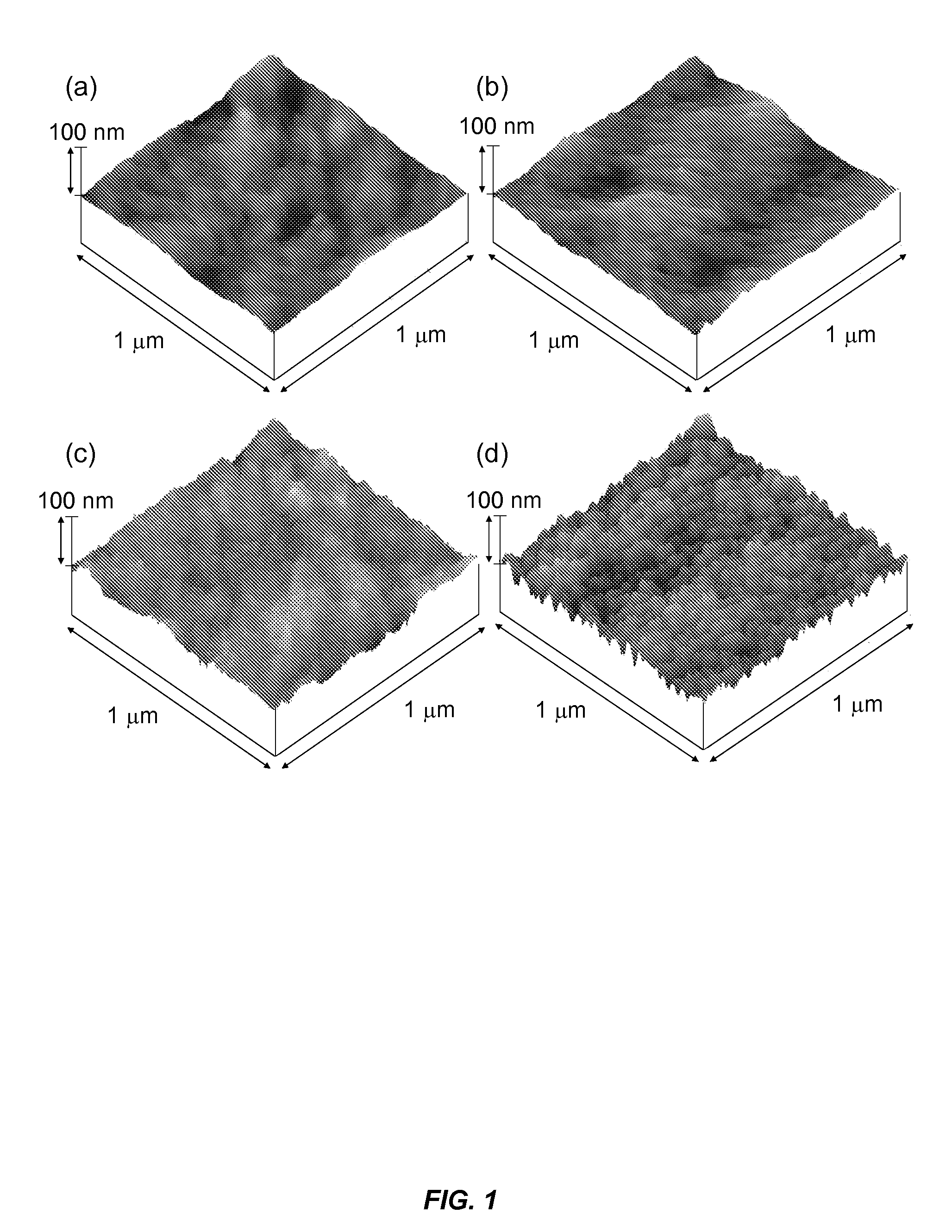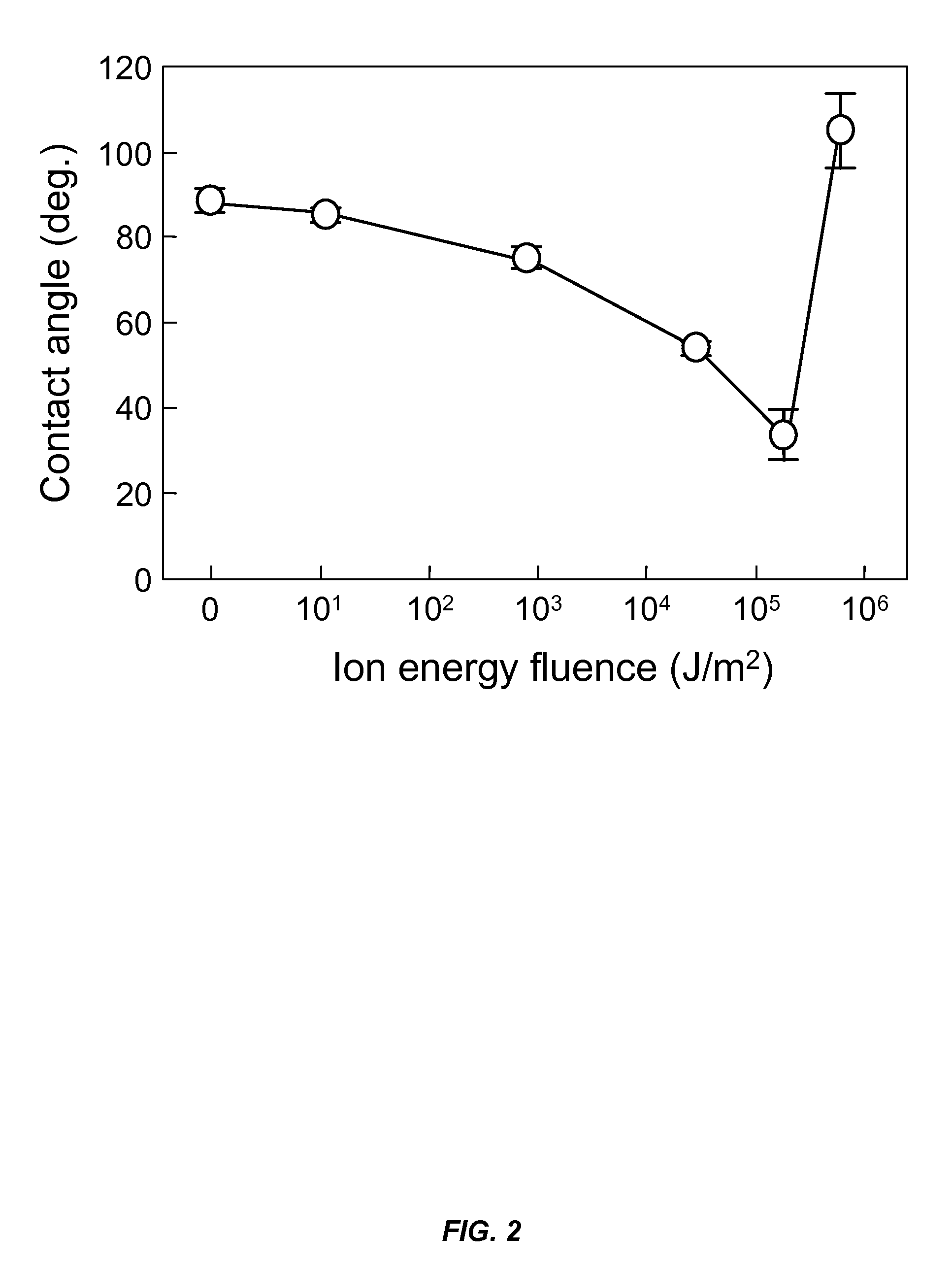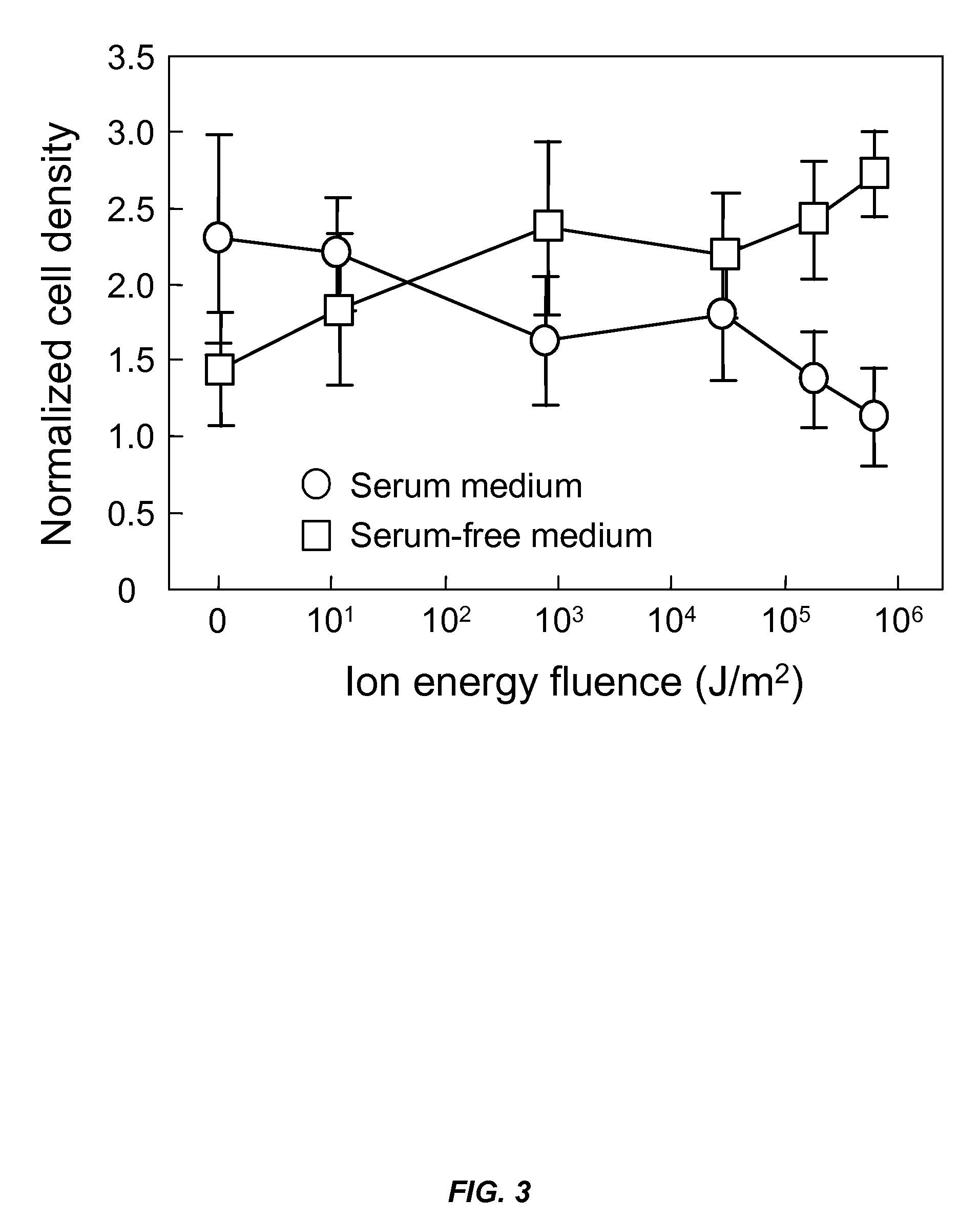Method to control cell adhesion and growth on biopolymer surfaces
a biopolymer and cell technology, applied in the field of control of cell adhesion and growth on biopolymer surfaces, can solve the problems of limiting the degradation of protein coatings, degradation of material properties, etc., and achieve the effects of promoting bioentity growth, improving implants, and promoting bioentity growth
- Summary
- Abstract
- Description
- Claims
- Application Information
AI Technical Summary
Benefits of technology
Problems solved by technology
Method used
Image
Examples
examples
Experimental Procedures
[0053]Materials and Plasma Surface Modification.
[0054]Pellets of LDPE (Sigma-Aldrich, St. Louis, Mo.) were pressed against glass slides to obtain samples of 1 cm in diameter and thickness in the range of 800-900 μm. The details of the sample fabrication procedure have been presented elsewhere (Tajima, S. et al., J Phys Chem B 109:17623-17629 (2005)). X-ray diffraction and differential scanning calorimetry showed that the crystallinity of the LDPE samples was ˜50%. A radio frequency (rf) inductively coupled plasma source (Litmas, Charlotte, N.C.) comprising a hollow ceramic tube with a winded helical coil was used to modify (both physically and chemically) the sample surfaces with Ar plasma and, thus, produce LDPE surfaces of different hydrophilicity (wettability) and oxygen surface functionalities. A high-purity (99.999%) Ar gas (Praxair, Danbury, Conn.) was introduced into the vacuum chamber at a flow rate of 100 sccm, while the working pressure was maintaine...
PUM
| Property | Measurement | Unit |
|---|---|---|
| time | aaaaa | aaaaa |
| time period | aaaaa | aaaaa |
| surface roughness | aaaaa | aaaaa |
Abstract
Description
Claims
Application Information
 Login to View More
Login to View More - R&D
- Intellectual Property
- Life Sciences
- Materials
- Tech Scout
- Unparalleled Data Quality
- Higher Quality Content
- 60% Fewer Hallucinations
Browse by: Latest US Patents, China's latest patents, Technical Efficacy Thesaurus, Application Domain, Technology Topic, Popular Technical Reports.
© 2025 PatSnap. All rights reserved.Legal|Privacy policy|Modern Slavery Act Transparency Statement|Sitemap|About US| Contact US: help@patsnap.com



